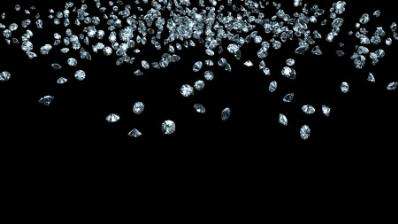An unlikely use for diamonds

Tiny diamonds are providing scientists with new possibilities for accurate measurements of processes inside living cells with potential to improve drug delivery and cancer therapeutics.
Published in Nature Nanotechnology, researchers from Cardiff University have unveiled a new method for viewing nanodiamonds inside human living cells for purposes of biomedical research.
Nanodiamonds are very small particles (a thousand times smaller than human hair) and because of their low toxicity they can be used as a carrier to transport drugs inside cells. They also show huge promise as an alternative to the organic fluorophores usually used by scientists to visualise processes inside cells and tissues.
A major limitation of organic fluorophores is that they have the tendency to degrade and bleach over time under light illumination. This makes it difficult to use them for accurate measurements of cellular processes. Moreover, the bleaching and chemical degradation can often be toxic and significantly perturb or even kill cells.
There is a growing consensus among scientists that nanodiamonds are one of the best inorganic material alternatives for use in biomedical research, because of their compatibility with human cells, and due to their stable structural and chemical properties.
Previous attempts by other research teams to visualise nanodiamonds under powerful light microscopes have run into the obstacle that the diamond material per se is transparent to visible light. Locating the nanodiamonds under a microscope had relied on tiny defects in the crystal lattice, which fluoresce under light illumination.
Production of the defects proved both costly and difficult to realise in a controlled way. Furthermore, the fluorescence light emitted by these defects, and in turn the image gleaned from the microscopic exploration of these flawed nanodiamonds, is sometimes also unstable.
In their latest paper, researchers from Cardiff University's Schools of Biosciences and Physics showed that non-fluorescing nanodiamonds (diamonds without defects) can be imaged optically and far more stably via the interaction between the illuminating light and the vibrating chemical bonds in the diamond lattice structure which results in scattered light at a different colour.
The paper describes how two laser beams beating at a specific frequency are used to drive chemical bonds to vibrate in sync. One of these beams is then used to probe this vibration and generate a light, called coherent anti-Stokes Raman scattering (CARS).
By focusing these laser beams onto the nanodiamond, a high-resolution CARS image is generated. Using an in-house built microscope, the research team was able to measure the intensity of the CARS light on a series of single nanodiamonds of different sizes.
The nanodiamond size was accurately measured by means of electron microscopy and other quantitative optical contrast methods developed within the researcher's lab. In this way, they were able to quantify the relationship between the CARS light intensity and the nanoparticle size.
Consequently, the calibrated CARS signal enabled the team to analyse the size and number of nanodiamonds that had been delivered into living cells, with a level of accuracy hitherto not achieved by other methods.
Professor Paola Borri from the School of Biosciences, who led the study, said: "This new imaging modality opens the exciting prospect of following complex cellular trafficking pathways quantitatively with important applications in drug delivery. The next step for us will be to push the technique to detect nanodiamonds of even smaller sizes than what we have shown so far and to demonstrate a specific application in drug delivery."
More information: "Coherent anti-Stokes Raman scattering microscopy of single nanodiamonds." Nature Nanotechnology (2014) DOI: 10.1038/nnano.2014.210
Journal information: Nature Nanotechnology
Provided by Cardiff University



















